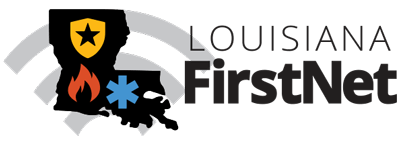
FirstNet, short for the First Responder Network Authority, is the governing body tasked with building and managing the first nationwide, high-speed, broadband network dedicated to public safety. FirstNet will provide a single interoperable platform for emergency and daily public safety data communications.
The Middle Class Tax Relief and Job Creation Act of 2012 created FirstNet as an independent authority within the National Telecommunications and Information Administration (NTIA). FirstNet is governed by a 15-member board consisting of the Attorney General of the United States, the Secretary of Homeland Security, the Director of the Office of Management and Budget, and 12 members appointed by the Secretary of Commerce. The FirstNet Board is composed of representatives from public safety; local, state, and federal government; and the wireless communications industry.
Also, consistent with requisites of the statute, a Public Safety Advisory Committee (PSAC) was created. The PSAC consists of 40 members who represent public safety organizations from all disciplines of public safety, as well as state, territorial, tribal and local governments. This advisory committee provides its advice to help ensure FirstNet delivers a network that meets the needs of public safety.
Public Safety Broadband is similar to the data service most people purchase through commercial carriers for their smartphones and mobile devices, but it is dedicated to public safety professionals. Many of us have participated in events where high congestion caused us to be unable to post pictures, send texts or access applications that we use on a regular basis. Sometimes we can’t even get calls to go through.
Our public safety officials experience the same lack of access as the general public and during those times are unable to access critical data such as criminal justice information, computer-aided dispatch, etc. Often these outrages and congestion happen during the emergencies and natural disasters when information sharing is most critical. The Public Safety Broadband Network (PSBN) will be a cellular data network that uses the same technology as the commercial carriers but operates in a frequency spectrum dedicated to public safety; this assures that first responders have access to critical data and applications especially during incident response when commercial carriers are saturated and least reliable. Additionally, the network infrastructure will be built to the “mission critical” public safety standards required to operate in the difficult conditions first responders experience.
In addition to creating the First Responder’s Network Authority, or “FirstNet” to oversee the deployment of the NPSBN, Congress allocated an additional 10 MHz of spectrum in the 700 MHz D-block thus providing a full 20MHz dedicated to public safety’s mobile data needs. The technology selected for the NPSBN is Long-Term Evolution (LTE) and will be deployed in Band Class 14.
Simply put: existing commercial LTE networks aren't reliable enough to depend on during an emergency.
Commercial LTE networks are market-driven, built based upon profit models. Public safety use of LTE must rely upon a different model; one that values priority access, places an emphasis on group communication, provides coverage in rural and underserved areas, and builds reliability, resiliency and security into the network and user devices.
The public safety broadband network will differ in some important ways from commercial LTE systems:
In some ways, the network will be similar to commercial LTE systems:
The LTE standards for mission critical voice have not yet been developed and are likely several years away. Mission critical voice standards include push-to-talk, one to many, and direct talk modes (for when towers are down). None of these standards have been developed for LTE. Mission critical voice will continue to use Land Mobile Radio (LMR) technology such as the Louisiana Wireless Information Network (LWIN) for the foreseeable future.
No pricing models exist.
FirstNet would be a new wireless data provider. You will decide if you want to subscribe or stay with your current data plan/provider. If there isn’t a comparable value proposition, you aren’t compelled to sign on.
Dispatch could send high-definition video, photos, and maps to responders rather than to just give an address. While en route, ambulances could transmit high volume, real-time patient information. Plans, perimeters, and other data could be transmitted real time. In short, members of the public would receive more efficient lifesaving services.
